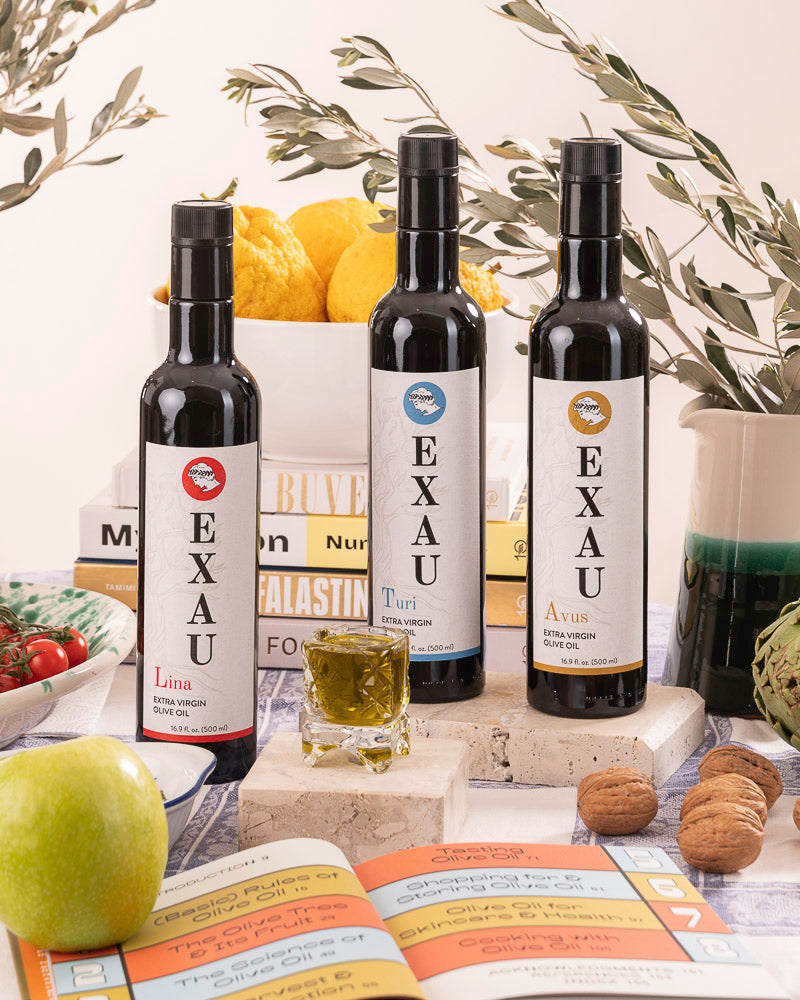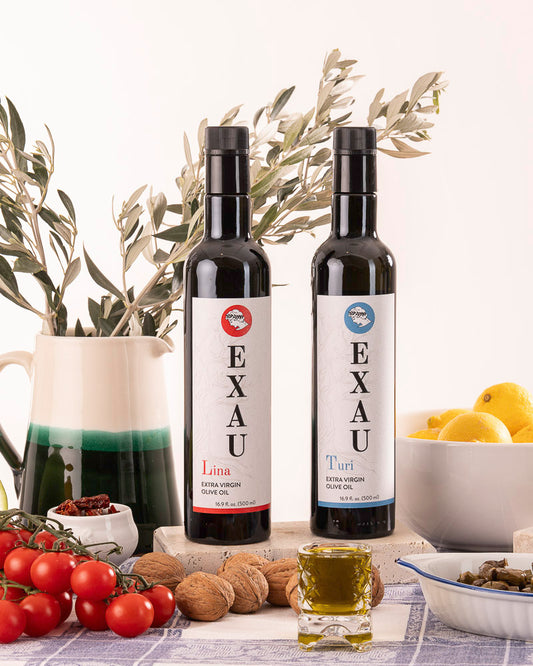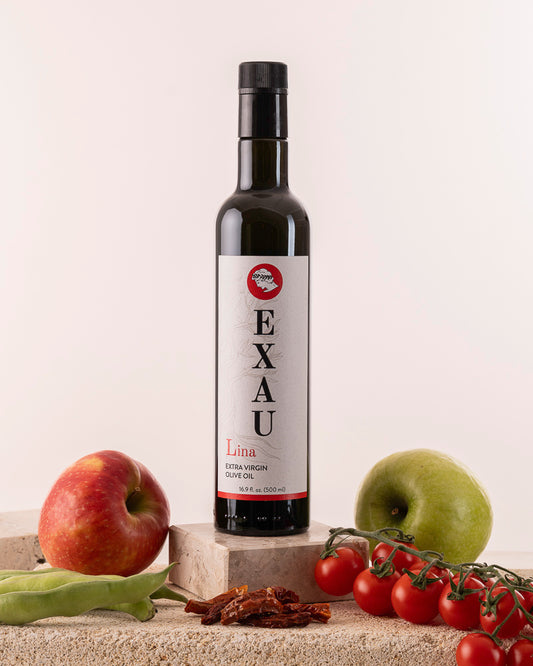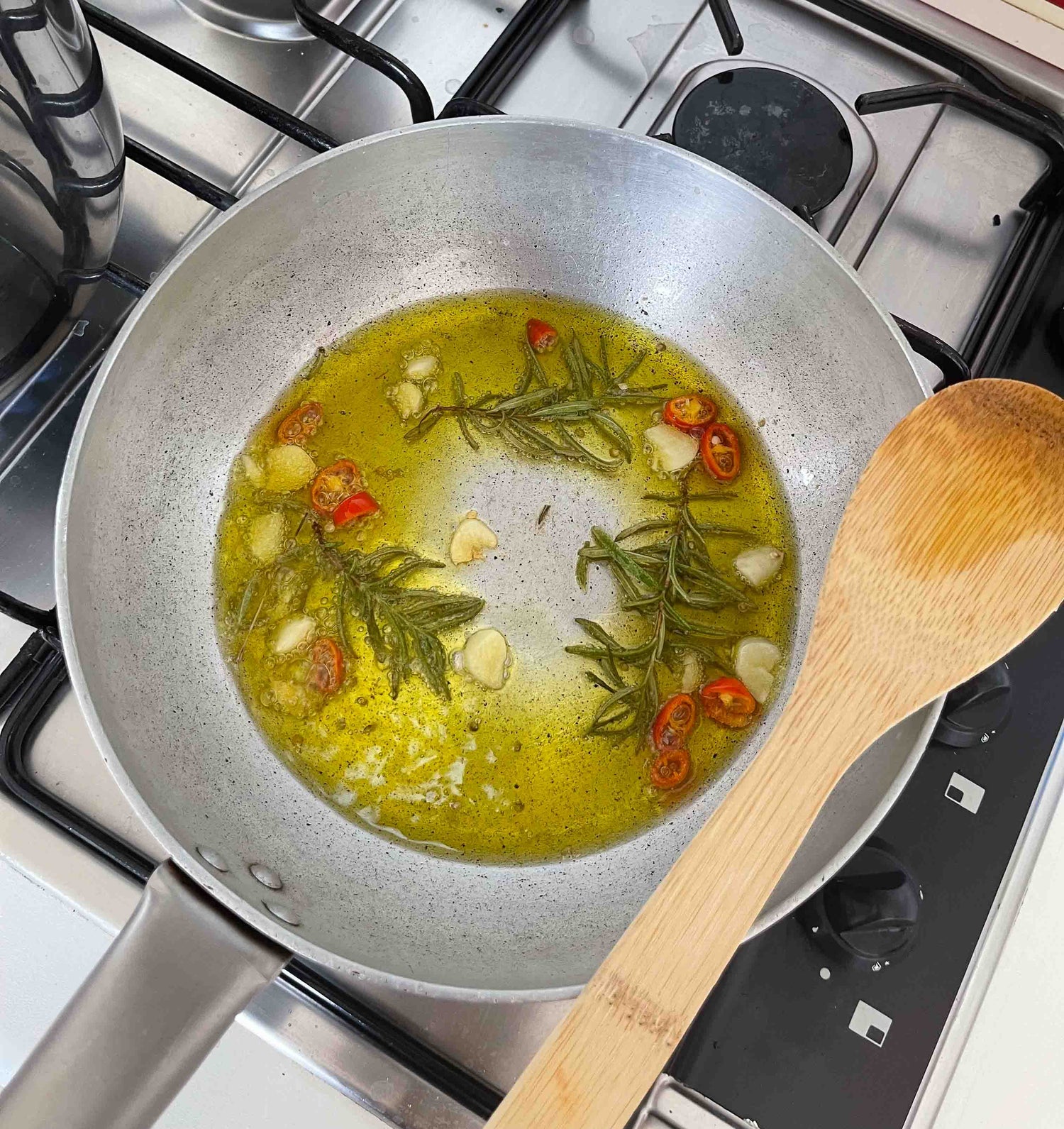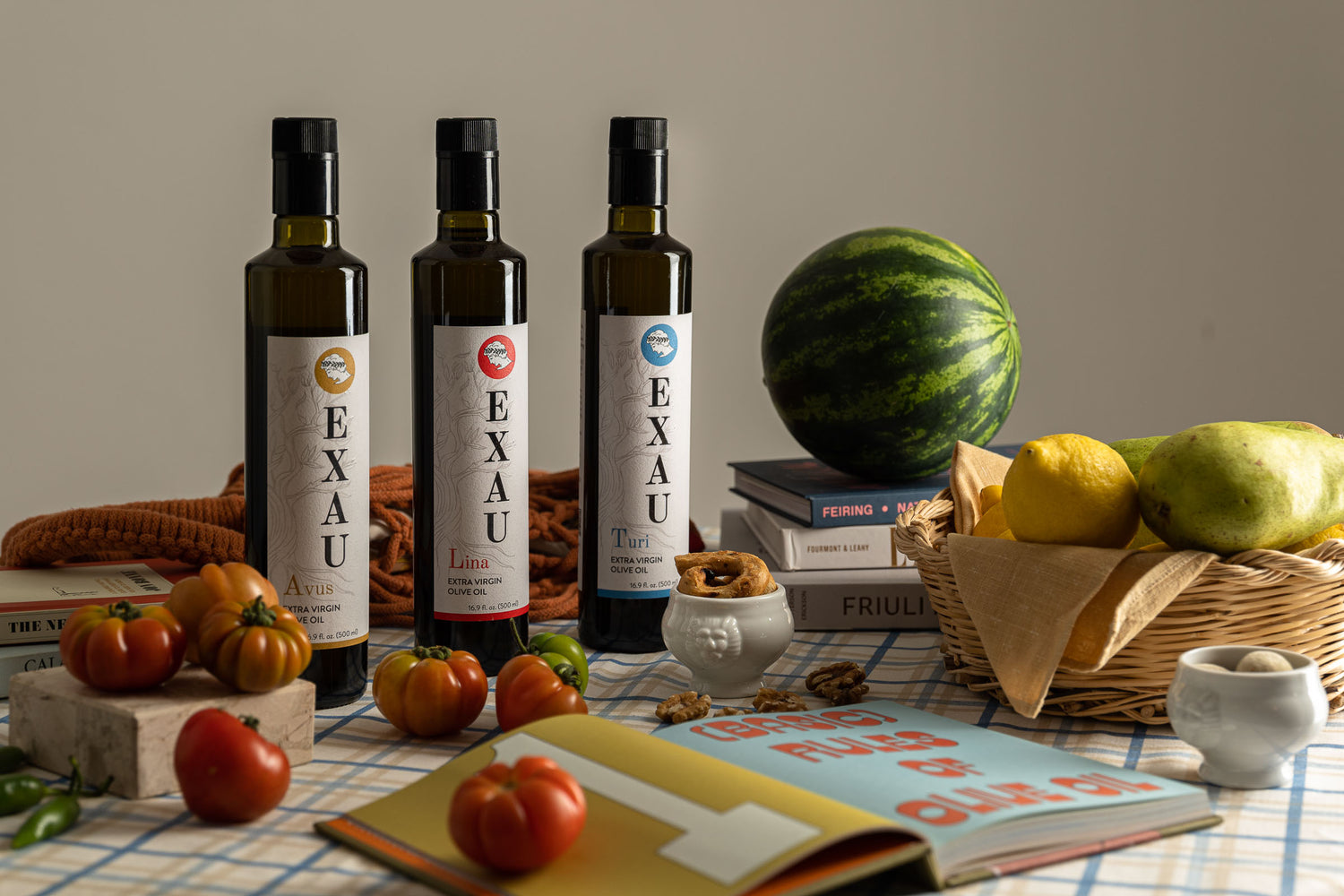In this article, we compare coconut oil vs olive oil in terms of the production methods, health benefits, culinary uses, and more. Let's dive in!
Coconut Oil vs Olive Oil
Coconut oil and olive oil and two extremely popular cooking fats, but which one is better?
Olive oil is the better option for everyday use because it offers more health benefits, greater versatility, and depending on the type is less processed. We will touch more on that last point later.
Apart from their potential health benefits, both products have distinct flavors and culinary applications. Let's explore how these cooking fats can be used in the kitchen.

Culinary Uses
Olive oil is a staple of the Mediterranean diet and rightly so, it fits in with all of the desirable flavors for that part of the world. Here are some of the flavors and foods that come to mind when thinking about the Mediterranean diet: greek salad, pasta with tomatoes, soffrito, and garbanzo bean salad. All of these foods fit well with olive oil.
Coconut oil is a staple in many Asian cuisines. It fits in perfectly with foods like pad thai, coconut soup, sticky rice cake, and yellow or green curry. The flavors compliment each other and it makes sense why the product has been such an important ingredient particularly in South Asian.
Olive oil has a more round and bitter. While coconut oil is more tropical and slightly sweeter. Both feel incredibly rich on the palate, however, since coconut is solid at room temperature it feels richer. When heated both also offer loads of flavor and make for a delicious foundation.
Difference in Price
Honestly they both carry a generous price tag. However, generally speaking olive oil is more expensive. The price tag also gets higher for virgin and extra virgin products because they have a lower yield, are more costly to produce, and less refined.
Related: Regular vs Extra Virgin, What's the Difference?
What is Coconut Oil?
Coconut oil is made by extracting the oil from the flesh of mature coconuts. There are a few different ways to do this and a wet vs dry extraction method. Regardless the process they all take quite a few steps.
First, mature coconuts, with a brown outer shell, are harvested. They're then husked, which is the process of removing the outer fibers, this leaves behind the hard inner shell. The shell is cracked open to access the white coconut flesh inside.
The white flesh is grated or shredded into smaller pieces which can be done manually or mechanically. Next they go through what is known as a wet or dry extraction.
The wet method involves pressing the fruit to extract both milk and oil. The milk must then be separated from the oil and this is done using a variety of methods, one of which includes a centrifuge (a machine that specializes in separating liquids).
The dry method involves removing any moisture content from coconut flesh through heat. This is done using the sun or specialized drying equipment and creates what is called copra. The copra is then pressed or dissolved using chemical solvents such as hexane.
If hexane sounds familiar, that's because we've written about it before. Manufacturers use it to produce canola oil which is made from the rapeseed plant.
There are also two common methods to for extracting coconut oil, cold pressing and heat pressing.
- Cold pressing involves pressing the coconut flesh mechanically at low temperatures, typically below 120° F (49° C). This method helps retain more nutrients and flavor in the oil.
- Heat pressing involves subjecting the dried coconut to heat, either through direct heating or by using steam, to facilitate the extraction process. This process usually yields a higher quantity of oil but can also result in some loss of nutrients and flavor.
After extraction, the product is then filtered to remove any impurities or solid particles. This helps to create a clear oil.
It's important to note that the exact methods and equipment used during the manufacturing process can vary depending on the scale of production and quality of the product.
Traditional methods often involve more variations in the process, but the fundamental steps are pretty much the same.

The Coconut Tree
Scientifically known as Cocos nucifera, researchers believe the coconut tree originated in Southeast Asia, specifically the Malay Archipelago.
It's commonly found in countries such as Indonesia, the Philippines, India, Sri Lanka, and Thailand. However, due to human cultivation and dispersal, they can now be found in tropical and subtropical regions worldwide. They're grown in more than 80 countries and can even be found in more urban cities in places like Hawaii, California, Florida, Mexico, and more.
It's estimated that there are around 150 to 200 recognized cultivars of coconut trees worldwide. Each one has its own characteristics varying in size, shape, color, taste, and resistance to diseases. Some popular ones include the Malayan Yellow Dwarf, Fiji Dwarf, King Coconut, and the Jamaican Tall.
While they are quite drought tolerant without regular watering they won't produce a lot of fruit. On the contrary if the tree is regularly exposed to flooding it can become waterlogged and die.
Lastly, coconut trees have a surprisingly long lifespan, on average living between 70 to 100 years. However, with proper care and maintenance, some have been known to live well beyond 100 years!
What is Olive Oil?
Olive oil is a type of vegetable oil derived from the fruit of the olive tree, scientifically know as Olea europaea. It's widely recognized for its culinary and health benefits.
To extract the fat, farmers harvest the fruit in the fall. The fruit then goes through a mill and centrifuge which separates the oil from the discard which includes the flesh, pit, and other solid materials.
There are different grades of the fat including extra virgin, virgin, and regular olive oil. Extra virgin is the highest quality and the least refined. Regular is the most refined going through a heating and homogenization process to deodorize the product.
To be shelf stable the product is typically decanted and filtered. Olive oil, especially extra virgin, can vary greatly in taste, color, and aroma depending on factors such as the variety of olives used, the region of production, and the extraction method.
Related: How is EVOO Made

The Olive Tree
The olive tree is originally from what is known as modern day Syria, however, many centuries ago it made its way over to countries such as Greece and Italy.
Today it's mostly grown in the Mediterranean basin in countries, such as Spain, Italy, Greece, Portugal, Morocco, and Palestine.
However, with the increase in use of the trees by-products it now grows in other regions of the world including places like California, Argentina, and Australia.
The olive tree is quite drought resistant and can live for centuries. However, it is susceptible to diseases and prolonged droughts.
For a closer look at this incredible tree take a look at our book.
Coconut vs Olive Oil Health Benefits
Coconut oil has gained in popularity for its potential cognitive benefits. It's believed that the medium-chain triglycerides (MCTs) found in the product can be more easily converted into ketones, which serve as an alternative energy source for the brain.
In terms of weight loss, coconut oil has been touted as a natural metabolism booster. The MCTs in the product are thought to increase energy expenditure and promote feelings of fullness, potentially aiding in weight management. However, it's important to note that the evidence supporting these claims is still limited and more research is needed.

Saturated vs Monosaturated Fats
Coconut oil is rich in saturated fats, with around 90% of its fat content consisting of saturated fatty acids.
Too much saturated fat can cause the build up of LDL, also known as bad cholesterol. Unfortunately, according to research, high LDL can potentially increase your risk for heart disease and stroke.
Health professionals have hot debates around the product because on one hand, saturated fats have long been associated with increased risk of heart disease. But on the other hand, the product also contains MCTs, which are believed to have some potential health benefits.
Olive oil is predominantly composed of monounsaturated fats, specifically oleic acid. This type of fat is known for its heart-healthy properties. And according to research most fats we humans consume should come from foods that are rich in monosaturated and polysaturated fats.
Olive oil is also rich in Vitamin E and contains other beneficial compounds such as polyphenols, which have antioxidant and anti-inflammatory effects. In addition, research indicates that the product can prevent the development of various diseases, including heart disease, diabetes, certain types of cancer, and even Alzheimer's Disease.
If you're considering a change in your diet and fat intake speak with a medical professional.
Shop our collection of high-quality Italian EVOO today!
You might also like...
Can You Use OO as Makeup Remover?
Hey, we wrote a book all about our favorite cooking fat. If you want to learn more get your copy today!
If you learned something new or have opinions on this topic, please leave a comment and let us know your thoughts! We love to hear from you. If you’re on Instagram, TikTok, or Facebook don’t forget to tag us so we can repost!
